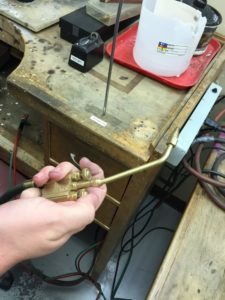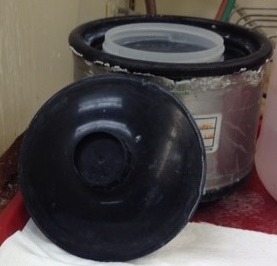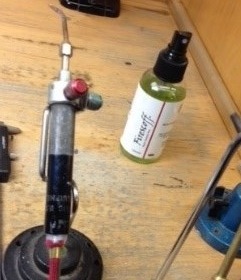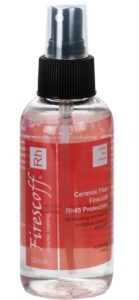What tools do you guys use in your manufacturing? This is the #1 question we get asked. You want to know. And we’re excited to share. At Stuller, we don’t give out the “tried & tested” stamp (the one you’ve probably seen in our recent tools catalogs and on Stuller.com) that easily. Those products have to prove themselves first.
Our manufacturing experts work with a wide range of tools and equipment every day. They have strong opinions and suggestions – rightly so with more years of experience than we’re able to tally. We rely heavily on their advice when choosing which new products get added to our line. These items are extensively tested in actual manufacturing scenarios both real-time and lab settings. We bang them up and push them to their limits daily. That way you know if they make the team, they’ve got to be good.
January is synonymous with repair. In fact, 25% of your total sales will be generated from repair jobs this month alone. So, in conjunction with our Repair campaign on Stuller.com, we will be showcasing a Stuller Tried & Tested series. See our associates use many of your favorite products, learn more about each, and why they’ve earned our seal of approval.
Soldering
If you don’t own a laser welder, then you probably own a torch. That’s probably how most start to learn about soldering when first getting into the jewelry business. Here are the deets on the items we love for smaller soldering work.
The Little Torch aka The Brave Little Toaster
For soldering items like findings, earrings, pendants, and chains, our go-to is The Little Torch(14-0024). Andy the Tool Guy calls it “the Mustang of all torches.”
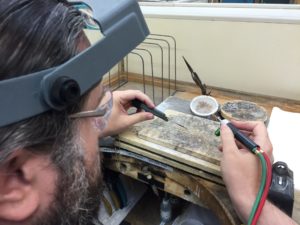
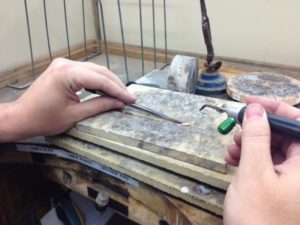
Why we love it: We love this torch because it’s perfect for small pieces. It’s very lightweight, so there isn’t any hand fatigue, and depending on the type of metal you’re working with, you can use either the acetylene/ oxygen, or the propane/oxygen. The knobs are located on the side of the torch directly above where your hand sits. This way it’s easy to change flames without stopping, thus increasing efficiency and production.
The system comes with:
- A torch
- An eight-foot hose
- Curved tips (5) for different types of flames
- Instructions
The hoses fit any standard regulator and can be used with any fuel – gas or oxygen.
We like to use the acetylene/oxygen combination for silver, because it produces a hotter flame. We don’t use it on platinum as it will contaminate the piece and cause it to break. For platinum, propane or natural gas is better and much cleaner.
Tips: To prevent soldering pits in solder seams, use a 50/50 mixture of boric acid and alcohol so it forms a nice paste. And try not to overheat the piece when soldering.
Midget Torch
The Midget Torch (14-1600) is like the “father of all torches.” It was the first torch that we carried, and all other torches evolved from it. It’s ideal for larger pieces like rings, bracelets, and mountings. It weighs a bit more, however, due to its quality build, it can last for a long time with proper upkeep.
Shop set up: Of course, the best place to set up your soldering equipment is on your bench, where all the fun happens.
Little Dipper Pickle Pot
If you solder jewelry, then you know that you have to have a pickle pot to remove the oxidation after you solder the piece. The perfect item for this, in our humble jewelry opinion, is a small pickle pot (45-3015). As you can see in the image on the right, we keep ours in the corner of the bench. It’s small, so it doesn’t take up much space, and as soon as we finish soldering, we quickly and conveniently can drop the piece in.
Why we love it: We love it because it has a controlled temperature to heat pickle. If pickle is overheated, it can become hazardous, so the controlled temperature is good for health and safety reasons.
Firescoff® and Thermo Shield
Firescoff® and Thermo Shield are great protectants. Thermo shield is great to protect stones and areas that you don’t want the heat to get to.
As a heat shield, Firescoff® acts as a fluxing agent to help the solder flow better. It also helps protect the piece. It’s a 2-in-1 coating and flux. Holding the bottle approximately eight inches away, spray a fine mist evenly on the entire piece, and solder away. You can remove the coating with warm water or an ultrasonic bath – it’s that easy.
Why we love it: It makes solder flow easier. And putting boric acid over the Firescoff® helps protect the piece.
Tips: When you have to solder a piece that has been rhodium plated,Firescoff® Rh (54-4412) is a great tool because you don’t need to remove any rhodium prior to soldering, saving you time.
What are your favorite soldering tools? Do you have any soldering tips for us? We’d love to know! Leave your comments below. For more information more articles please visit our Blog.
